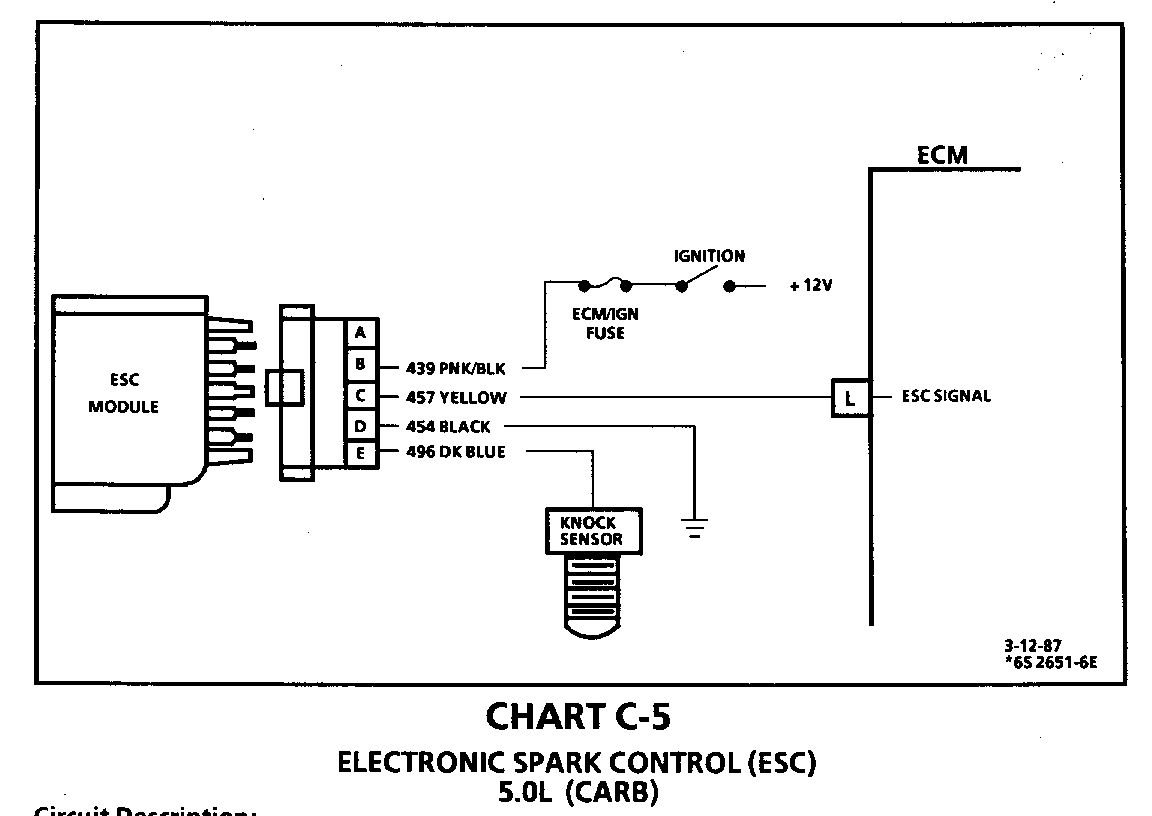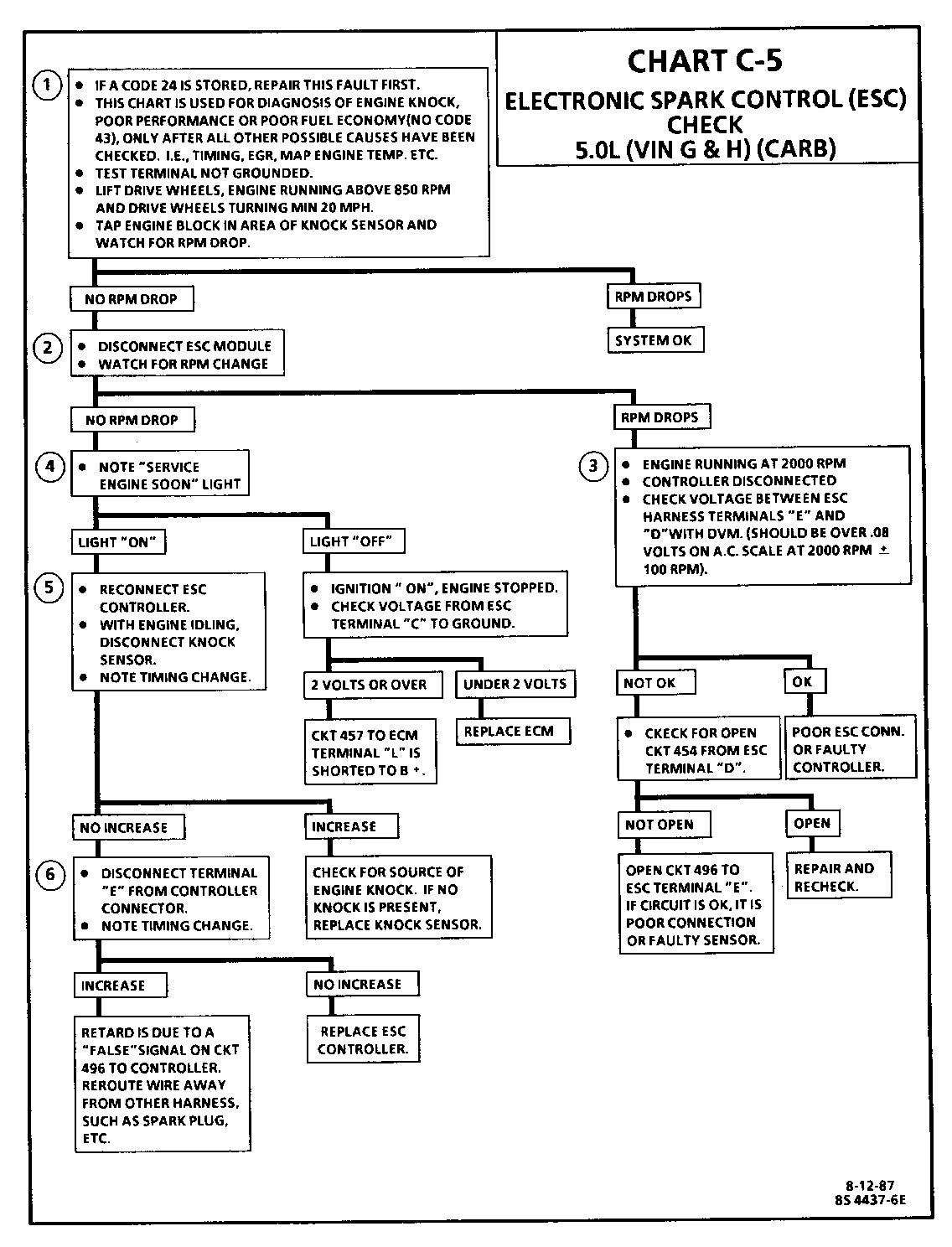FUNCTIONAL CHECK-ESC SYSTEM SERVICE MANUAL REVISION

Model and Year: 1986-87 CAPRICE, MONTE CARLO, EL CAMINO, CAMARO WITH A 5.OL ENGINE (F, H AND 6)
The C-5 charts in this bulletin are to be used in place of the charts in the 1986-87 service manuals for the subject vehicles.
The change in the chart is the addition of the vehicle speed input to the ECM requirement. The ECM will not retard timing if a MPH input is not received.
The new step is to lift drive wheels and run engine above 850 RPM and drive wheels turning minimum 20 MPH. If the ESC is functioning properly, an engine RPM drop will be noticeable via a "scan" tool or tach.
CHART C-5 ELECTRONIC SPARK CONTROL (ESC) 5.OL (CARB)
Circuit Description:
If the timing is retarded at idle, it may be due to ESC operating. ESC should not operate unless a knock is present, and vehicle speed is above 20 mph.
Test Description:
Numbers below refer to circled numbers on the diagnostic chart. See Figure 1.
1. This is the ESC functional check. The ECM must be monitoring mph for ESC to function, so check of Code 24 is stored. With engine running above 850 rpm and drive wheels at least 20 mph, simulate an engine knock by tapping the engine block. This should normally cause an rpm drop (decrease timing). If it doesn't drop, either the timing is not retarding or is retarded all the time.
2. This should cause full retard by dropp ing the voltage at ECM term. "L." Retarded timing should cause an rpm drop.
3. Normally, voltage should be .08V A/C or higher for a good knock sensor circuit.
4. "Service Engine Soon" light should be "on " and a Code 43 set because ESC system would be retarded too long. If no light comes on, the ECM is not retarding the spark because of a voltage on CKT 457 to terminal "L" or the ECM is faulty.
5. Checks to see if knock sensor is reason for retard signal. If engine knock is not present, and timing increases when knock sensor is disconnected, fault is an over sensitive knock sensor. Timing should not normally increase.
6. Checks to see if retard signal is due to "noise" on signal wire or faulty controller. If timing increases when wire is disconnected from controller, fault is due to knock sensor signal wire running too close to an ignition or charging system wire. Reroute wire to correct.


General Motors bulletins are intended for use by professional technicians, not a "do-it-yourselfer". They are written to inform those technicians of conditions that may occur on some vehicles, or to provide information that could assist in the proper service of a vehicle. Properly trained technicians have the equipment, tools, safety instructions and know-how to do a job properly and safely. If a condition is described, do not assume that the bulletin applies to your vehicle, or that your vehicle will have that condition. See a General Motors dealer servicing your brand of General Motors vehicle for information on whether your vehicle may benefit from the information.
